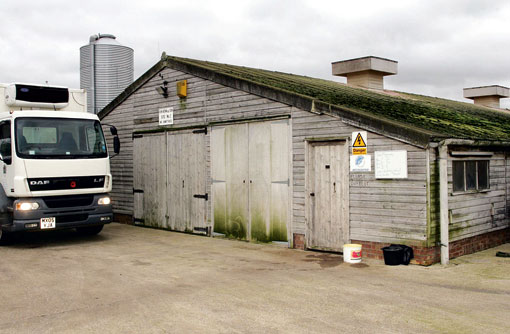Stop bad smells creating a stink for your poultry firm

Odour is a growing problem for poultry farmers, with complaints from the public an ever-present risk. Not only can it make obtaining planning permission for new or extended buildings more difficult, it can even lead to the revocation of an integrated pollution prevention and control (IPPC) permit. So what can farmers do to protect their businesses?
According to Alison Holdsworth, technical adviser at the Environment Agency (EA), all sites within 400m of a dwelling, hospital, school or public place such as a park must have an odour management plan in place. This examines ways in which the farmer can minimise odour emissions.
In the case of a public complaint, the local authority, (or EA in the case of IPPC permitted farms), must investigate. “Considerations affecting odour include general site management, the number of birds, feed type, storage of waste, manure and carcasses, as well as proximity to the complainant and spreading of manure.”
Speaking at a Datapoul event in Somerset, Mrs Holdsworth said the frequency, intensity, duration and offensiveness of the smell would all be considered. Upon visiting the site, the authority would take into account the weather, general state of the site and activity on the day. Common sources of odour included dirty yards, feed spills, dead birds, overflowing dirty water tanks, poor drainage and ventilation, and inadequate building maintenance.
To protect against possible prosecution following a complaint, farmers with an IPPC permit should complete an odour complaint form, investigate the possible source and record their findings, she added. “Tell the authority whether it was a specific incident – for example if you or your neighbour were muckspreading. It can also be useful to link to a weather station to indicate wind direction on a particular day.”
Top tips
- Create an odour management plan
- Keep the site clean and tidy
- Link to a weather station
- Consult with EA for advice
- Engage with the community
Engaging with the local community could also help prevent complaints. “Tell them when you will be destocking or spreading muck, so they know what to expect.”
The EA recently created a checklist, in conjunction with the British Poultry Council and NFU, which could help producers to comply with legislation and reduce odours. And a draft code of conduct was also in the pipeline, which would set out the key parties’ responsibilities.
“If you’re unsure about anything, or just want help with site layout and design, ring up the EA and ask for our advice,” said Mrs Holdsworth.
“Planning authorities have to consult with us anyway, so it can help to get our feedback when you’re applying for permission.”
Useful considerations included siting buildings and ventilation fans away from neighbours where possible, avoiding smelly feed with fish-based ingredients, and disposing of carcasses and waste in sealed containers. “Odour adheres to dust particles, so take steps to minimise dust. And wet litter also smells, so try to keep it in good dry condition.”
Some sites were particularly difficult to manage, so producers should examine whether to resurface muddy yards, and improve guttering and drainage to reduce run-off, she added. “Different ventilation types suit different sites, and some of the new technology like heat exchangers can reduce carbon dioxide, ammonia and dust. On average, we’ve seen a 35% drop in ammonia when using a heat exchanger. However, some manufacturers’ claims are pretty unjustifiable, so talk to the EA to see who can back up their claims.”
Sensitive sites may require odour modelling before obtaining planning permission for new or larger buildings, which would require input from a specialist, said Mrs Holdsworth. “Experience has shown that you are likely to get complaints where odour levels exceed three units, so it is worth taking advice before making any large capital investments.”
